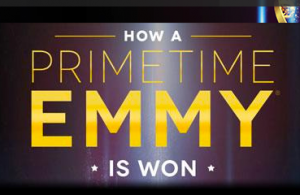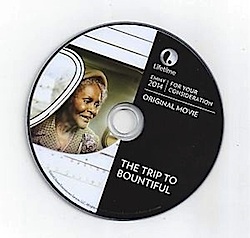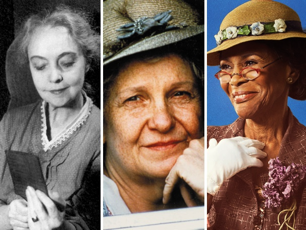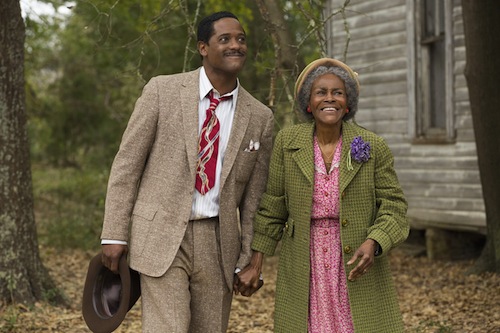Teaching Media as Text: The Emmy Awards

Where will you be on the night of August 25? I know where I’ll be: right in front of the television watching the Emmy Awards. Will your students be watching? Do they care who wins?
Like the annual Academy Awards (which recognize the finest in film) the Emmy Awards honor those in the television business–and not just those who appear on-screen. Writers, directors, lighting and sound experts and many others are also honored–but only the major categories make it to the prime-time broadcast. (Other “Creative Arts Emmy” winners were announced August 16 – see the list here. You can also read predictions for major awards here.)

We can acknowledge that our students love to watch television–even if “watching television” means viewing on a tablet, smartphone or smartTV. But what is it about television that they like? Is it the genre (drama, sci-fi, reality, crime, action, rom-com, etc), or is it the plot, or could it be the characters/actors? This medium (television) and these topics and more are worth exploring in a 21st century Common Core world.
The Common Core: Media as Texts
You may have heard or read that media ARE texts, but perhaps you don’t know what that means. As someone who teaches media education, I advocate studying media in all of its forms.
In a series published here on close reading, I examined visual literacy through photos, advertising and moving images (television and film). You’ll find links to the entire series at the end of Part 4.
Media are considered “non-print” texts. Most teachers use images and video in the classroom, but many tell me that they are not comfortable teaching media as texts. And that’s unfortunate.
The new Common Core teaching standards are rife with references to media. The introduction to the document acknowledges: “The need to conduct research and to produce and consume media is embedded into every aspect of today’s curriculum. “
One of the ELA Common Core standards for Reading-Literature 7th grade even encourages teachers to engage students in media:
“Compare and contrast a written story, drama, or poem to its audio, filmed, staged, or multimedia version, analyzing the effects of techniques unique to each medium (e.g., lighting, sound, color, or camera focus and angles in a film).”
And my own research shows that movies are one of the more popular forms of media used by English Language arts teachers. Drama teachers are also big users of media, often times having their students compare and contrast a staged production with a comparable one produced for television broadcast.

The Trip to Bountiful was first broadcast in 1953, in an era that has become known as the “golden age of television.” That year, Lillian Gish portrayed Carrie Watts, the elderly woman. That same year, Bountiful became a stage play in New York. It was also a theatrical release in 1985, with Geraldine Page in the starring role. Page won the Best Performance by An Actress in A Leading Role Academy Award for her portrayal.
Lillian Gish (left); Geraldine Page (center); Cicely Tyson (right)–actresses who tackled the role of Carrie Watts. Image source.
The 8th grade ELA standard reads:
“Analyze the extent to which a filmed or live production of a story or drama stays faithful to or departs from the text or script, evaluating the choices made by the director or actors.”
In a recent column here on “close reading,” I made note of the screen placement of the actors in a crucial scene from the broadcast production of “A Raisin In The Sun.” The director decided, prior to filming, where actors would stand and how they would move in the frame. Students don’t always recognize this device.
So when you utilize brief clips from films, it’s recommended that you pause the DVD, and point out techniques like lighting, costume, set design, actor’s placement and more. If you’ve not yet seen my Languages of Film website resource, it can help prepare and guide you when using motion pictures with students.
Classroom Applications
In my workshops with educators, I remind them that all media involve writing. So the films or TV programs that our students view start as a script. And those scripts should be studied.
The stage play for “The Trip to Bountiful” can be acquired for classroom study. (You might confer with your school or district drama department to determine if copies are already on hand.) Students can be challenged to compare the words in the play to both the 1985 theatrical version as well as the 2014 television version, both of which are available on DVD. (Portions of both productions can also be found on YouTube.)
Some questions students might consider include:
1. What must change when a production moves from stage to screen?
2. What must stay the same and why?
3. How does a production change from big screen (movie) to small screen (television)?
More about technique
When that 7th grade standard refers to techniques, it specifically mentions sound. The role of sound design is explained in this featurette (based on the Broadway revival of Bountiful in 2013). Another technique, not named in the standard but just as important, is costume. The important role of costume designer is explored in this featurette also available via YouTube.
Both costume and sound design are categories in the Emmy Awards. Other techniques that students might consider exploring include the use of lighting, music, and set design. As I’ve written previously, these are all part of the “languages of moving images.” These (camera, lights, sound, editing, set design, etc) are defined as both the tools and techniques which help create/imply meaning.
In a 21st century world, isn’t it important, if not critical, that today’s educators and students understand that media are also texts–which are designed to be read, analyzed, and deconstructed? I think so, and I hope you do too. And I hope you’ll use the occasion of this year’s Emmy Awards (August 25 at 8 p.m. Eastern) to engage your students in further exploration.
Frank W. Baker is a media literacy education consultant and the author of three books, including Media Literacy In the K-12 Classroom (ISTE, 2012). He contributed two chapters to Mastering Media Literacy (Solution Tree, 2014). In November 2013, Frank was a co-recipient of the National Telemedia Council‘s annual Jessie McCanse Award given for individual contributions to the field of media literacy over at least 10 years. Follow him on Twitter @fbaker.





































Emmy Voters Talk About Sizing Up the Nominees (NYT)
http://www.nytimes.com/2014/08/24/arts/television/emmy-voters-talk-about-sizing-up-the-nominees.html?ref=todayspaper&_r=0
Find Emmy 2014 Nominated Scripts here
http://la-screenwriter.com/2014/07/10/scripts-for-emmy-nominated-shows
Prediction: few Emmy awards (for writing and directing) will go to females http://www.washingtonpost.com/posteverything/wp/2014/08/25/and-the-emmys-for-writer-and-director-go-to-a-man-again/
Complete List of Emmy Winners
http://www.hollywoodreporter.com/news/emmy-awards-2014-complete-winners-725969
Emmy Wins: By Network and Program